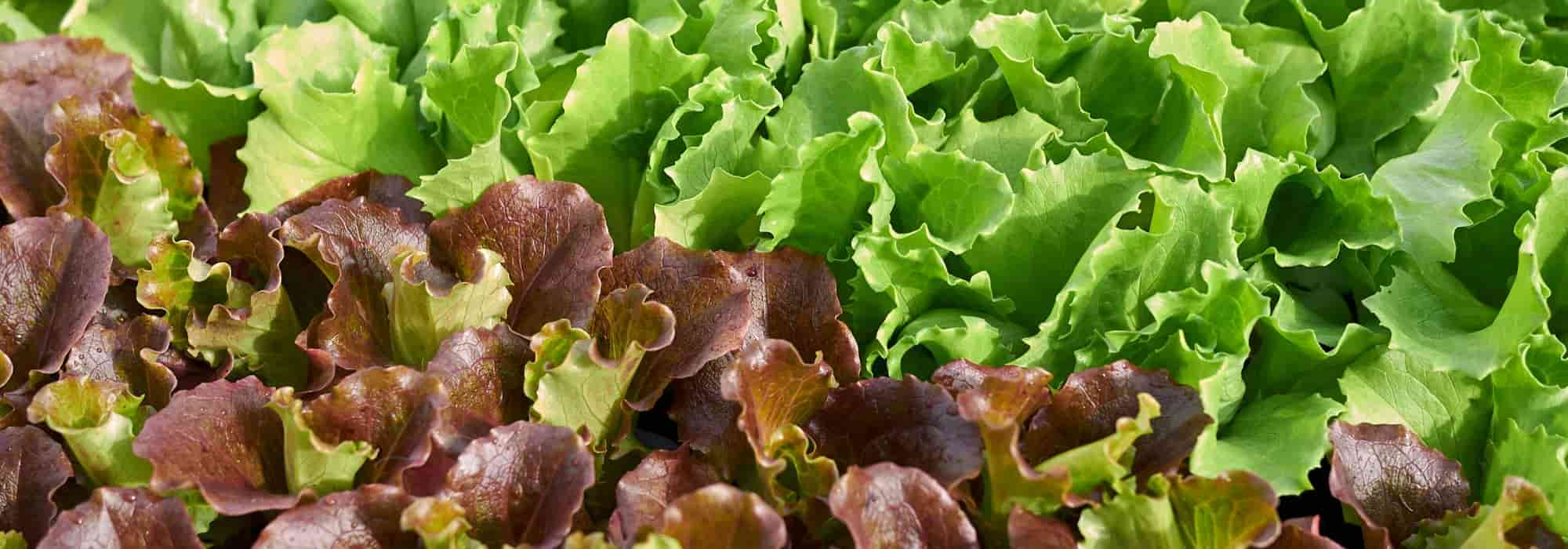
Lettuce: sowing, care and harvesting
Contents
Lettuce in a nutshell
- Lettuce is an annual herbaceous plant named after the thick liquid exuded by its stem when cut.
- There are several types of lettuce: butterhead, loose-leaf, batavia, romaine, oakleaf…
- Its leaves vary in tenderness, crispness, thickness, undulate, curly, or blistered, and can be green or red depending on the species.
- It is a very easy-to-sow and maintain vegetable plant.
- Lettuce can be sown from February to September and harvested from April to October, depending on the region.
The word from our expert
The lettuce… A seemingly ordinary salad that, upon closer inspection, holds a few delightful surprises. And most importantly, it goes beyond the simple term “lettuce,” the kind that floods supermarket shelves—often attractive in appearance but lacking real flavour.
Behind the generic term “lettuce” (Lactuca sativa) lie various types of salads with multiple characteristics and a strong personality. Because there isn’t just one cultivated lettuce but several! The most well-known is the basic butterhead lettuce, with tender leaves imbricate within each other to form a beautiful head, surrounded by a skirt of broader leaves.
But we must also consider the Batavia, which is none other than a lettuce with undulate leaves, tender yet crisp. Or the Romaine lettuce, ovate like a rugby ball, offering crunchy leaves. Not to mention the cut-and-come-again lettuces, including the indispensable ‘Oak Leaf’, which doesn’t form a head but produces tender leaves to be picked as needed. Lastly, the summer crisp lettuce is one of the few lettuces that can withstand the heat of summer.
Rich in trace elements, vitamins, and minerals, and low in calories, lettuce belongs to the category of leafy vegetables that are incredibly easy to grow, a staple in every vegetable garden and on every table (almost) all year round. Indeed, since lettuce grows everywhere, practically in all types of soil, and requires very little care, it deserves a prominent place in vegetable gardens. And if you stagger the sowing and transplanting, you can enjoy its leaves, raw or cooked, from spring to autumn.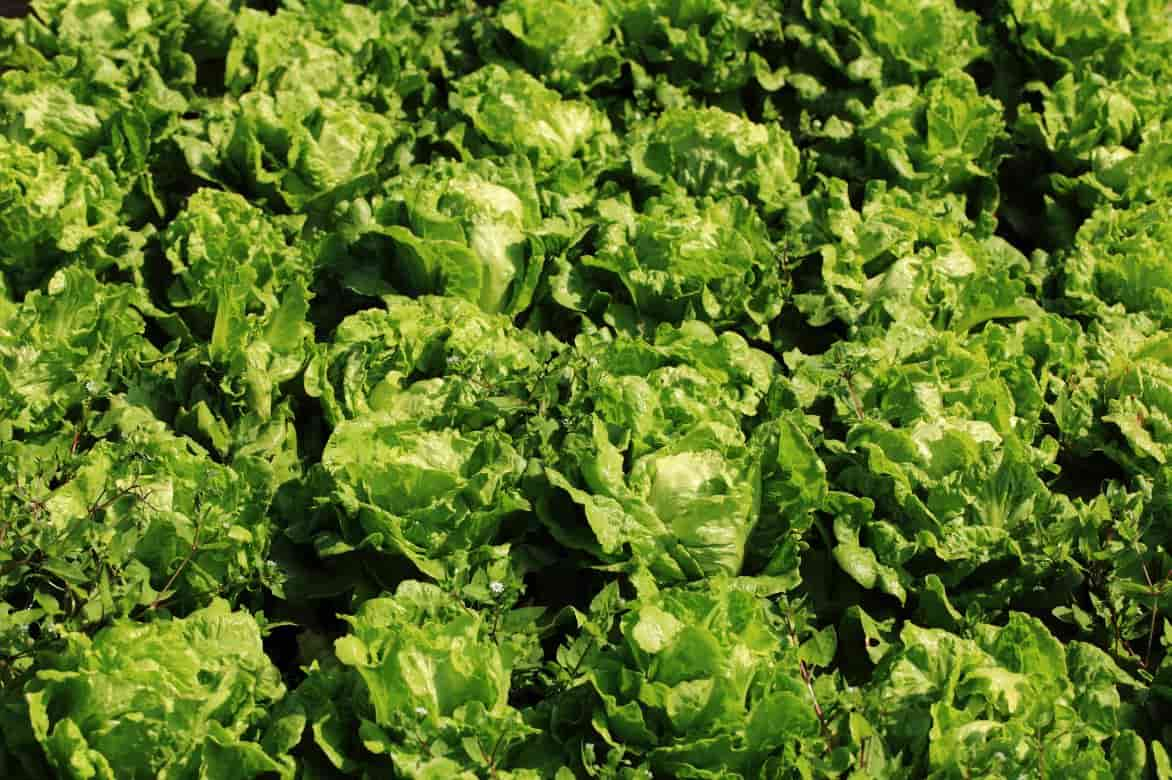
Description and Botany
Botanical data
- Latin name Lactuca sativa
- Family Asteraceae
- Common name lettuce
- Flowering from June to September
- Height up to 20 cm
- Exposure sun or partial shade
- Soil type all
- Hardiness down to -10°C
Lettuce (Lactuca sativa) is an edible vegetable plant, cultivated as an annual, belonging to the vast and cosmopolitan Asteraceae family. It is thus a distant cousin of daisies, chrysanthemums, and sunflowers!
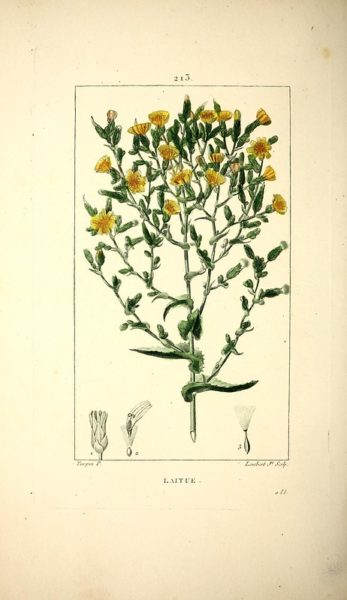
Botanical plate
It is difficult to pinpoint its exact origin, but it is certainly derived from a wild form of plant that grew naturally in Western Asia and the Near East, likely in the mountains of Kurdistan. Regardless, it has been consumed since antiquity! The Romans and Greeks enjoyed it as an “appetiser” to line the walls of their stomachs before indulging in their gargantuan meals. They appreciated the bitterness of its leaves and its soporific and anti-aphrodisiac properties. It was, in fact, Roman farmers who, by crossbreeding species, developed a stemless plant with large edible leaves. Thus, the romaine lettuce was born.
Later, in the Middle Ages, it was still consumed, as Lactuca sativa is mentioned in Charlemagne’s Capitulare de Villis. Its narcotic properties had, however, disappeared. It was during the 17th and 18th centuries that lettuce became a staple on tables, primarily in its head form. This rise was due to the practice of forcing, which extended the growing season. In the 19th century, with the expansion of large-scale market gardening areas, lettuce became one of the most common leafy vegetables on market stalls. This remains largely the case today, given the ease of cultivating lettuce in greenhouses.
Etymologically, the term “lettuce” comes from the Latin word “lacta,” meaning “milk.” Indeed, the stems of the wild plant, ancestor of our lettuce, contained a white juice resembling milk.
The lettuce commercially available today is grouped into different categories:
- Butterhead lettuce or head lettuce (Lactuca sativa var. capitata) (commonly referred to as lettuce) with smooth or crinkled leaves, tightly packed around a heart, green or red
- Batavia lettuce with deeply cut, undulating, sometimes curly leaves, both tender and crisp with their palmate veins
- Romaine lettuce (Lactuca sativa var. longifolia) with thick, crisp leaves and rigid ribs, forming an elongated head that grows vertically
- Cutting lettuce (Lactuca sativa var. crispa) with foliage that regrows after cutting. These lettuces do not form heads
- Iceberg lettuce with thick, crinkled leaves forming a small head
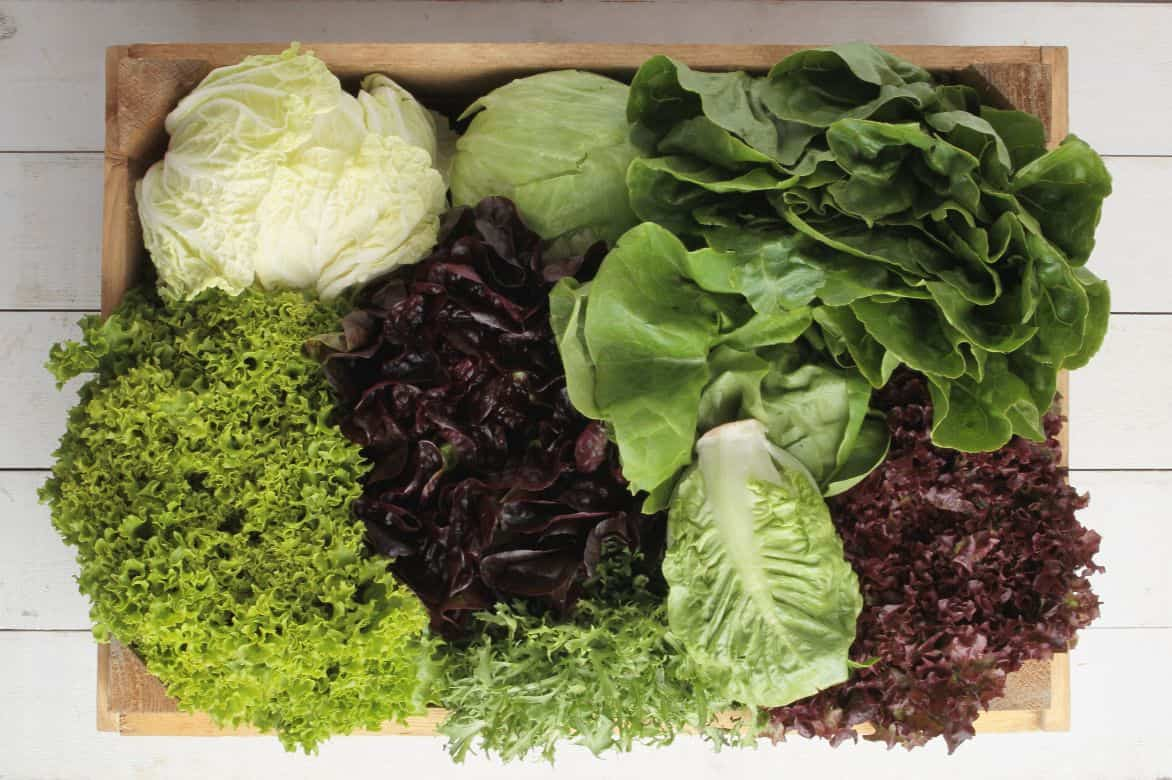
One could also add Italian lettuces, often red in colour, with more or less crisp leaves. They are often classified as cutting lettuces because they do not form heads. The stem lettuce (Lactuca sativa var. augustana), also called asparagus lettuce or celtuce, is mainly consumed cooked in Asia. It is cultivated for its swollen stem and leaves that do not form a head.
Lettuces are therefore annual vegetable plants with an upright habit, broad leaves, and a short stem. They first form rosettes of entire leaves. Then comes the heading phase, which distinguishes the different types of lettuce. This is the stage used for consumption. Afterward comes the reproductive phase, allowing for seed harvest.
The leaves are glabrous, devoid of prickles or spinulose cilia, soft, and ovate. The lower leaves are most often divided, while the middle and upper leaves are more ovate and dentate, embracing the stem from the base.
As it belongs to the Asteraceae family, lettuce flowers in the form of small heads comprising 12 to 20 yellow ligulate florets, closed at maturity. They are grouped into corymbiform panicles. From June to September, these flowers appear on long, erect stalks after the head elongates into small clusters. This bolting, characterised by stem elongation and flowering, is favoured by heat. These flowers give rise to greyish or whitish, downy achenes.
Depending on the variety, some lettuces are classified as spring lettuces (to be sown outdoors from June to November) or summer lettuces (to be sown outdoors from May to August), or winter lettuces (to be sown outdoors from August to November).
Lettuces are sensitive to temperatures that are too cold or too high, which is why it has become common to cultivate them under cloches or in greenhouses.
The best lettuce varieties
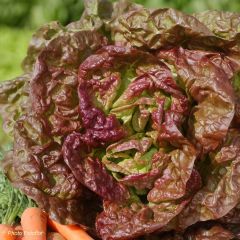
Butterhead Lettuce Marvel of Four Seasons
- Height at maturity 25 cm
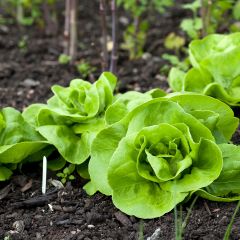
Butterhead Lettuce Reine de Mai - Lactuca sativa
- Height at maturity 20 cm
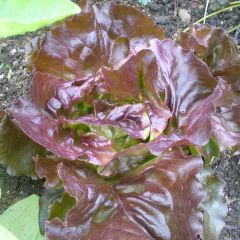
Lettuce Picholine - Lactuca sativa
- Height at maturity 20 cm
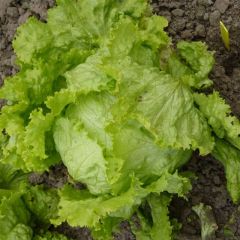
Batavia Lettuce de Pierre Bénite - Lactuca sativa
- Height at maturity 25 cm
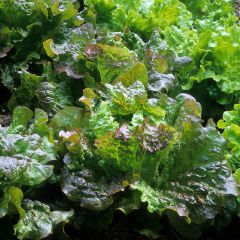
Batavia Lettuce Rouge Grenobloise - Lactuca sativa
- Height at maturity 20 cm
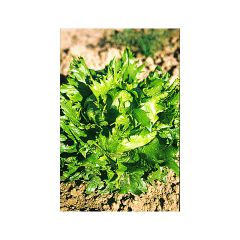
Batavia Lettuce Reine des Glaces - Lactuca sativa
- Height at maturity 20 cm
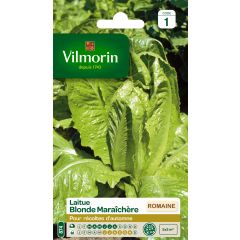
Lactuca sativa 'Romaine Blonde Maraîchère'
- Height at maturity 25 cm
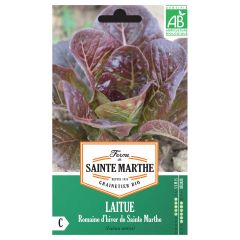
Romaine Lettuce dHiver de Sainte Marthe - Ferme de Sainte Marthe seeds
- Height at maturity 20 cm
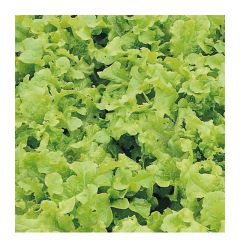
Oak Leaf Lettuce Blonde à graine noire - Lactuca sativa
- Height at maturity 20 cm
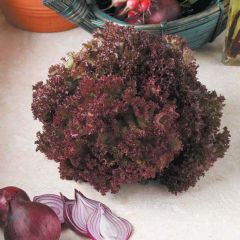
Lettuce Lollo Rossa - Lactuca sativa
- Height at maturity 30 cm
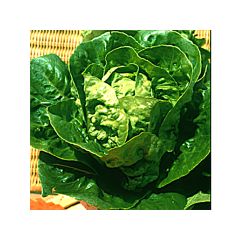
Lettuce Grasse Sucrine - Lactuca sativa
- Height at maturity 25 cm
Discover other Lettuce seeds
View all →Available in 1 sizes
Available in 1 sizes
Available in 1 sizes
Available in 1 sizes
Available in 1 sizes
Available in 1 sizes
Available in 1 sizes
Available in 1 sizes
Available in 1 sizes
Available in 1 sizes
The sowing of lettuce
Lettuces are easy-to-sow salad plants. You can also easily purchase lettuces in buckets (as young plants) or as plug plants that can be transplanted into the garden.
When to Sow?
Depending on the time of year, lettuce sowing is done under cover (cold frame, tunnel, or unheated greenhouse) in colder regions or directly in the ground.
Thus, so-called spring lettuces (‘Gotte jaune d’or’, ‘Reine de mai’, ‘Appia’) are sown from February or March under cover or directly in the ground in southern regions, but they can be sown until July.
Summer lettuces (‘Grosse Blonde Paresseuse’, ‘Laitue du bon jardinier’, ‘Kinemontepas’, ‘Merveille des quatre saisons’) are sown directly in the ground from late March to August.
Finally, autumn lettuces (‘Verpia’) and winter lettuces (‘Merveille d’hiver’, ‘Trémont’, ‘Val d’orge’) are sown directly in the ground in August and September. For these, it is recommended to provide protection such as a tunnel or winter fleece. The harvest will occur in the early days of the following spring.
Butterhead and romaine lettuces are very heat-resistant. This is why they are sown from March to June. Lastly, cut-and-come-again lettuces are sown in place from March to August, but care must be taken to water them as they bolt quickly in hot weather.
So, in summary, lettuces are sown from March to late September to ensure staggered harvests throughout the year. It is best to sow during a waning moon.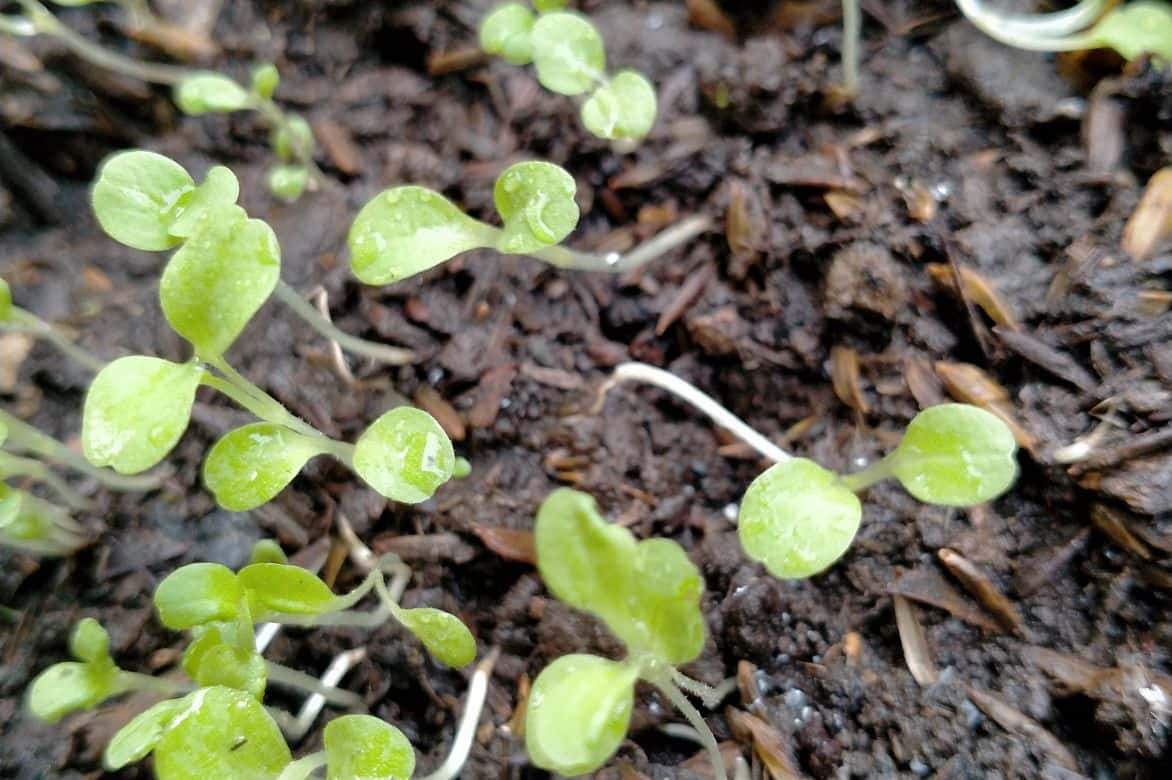
Where to Sow?
Lettuces adapt to all types of soil, except overly acidic or saline soils. However, the soil should be rich in organic matter, fairly cool and light, and above all well loosened, as lettuce has a shallow root system. Before sowing, it is recommended to incorporate well-decomposed compost or manure.
In terms of exposure, lettuce needs light and warmth to grow but fears scorching sun. This is why a semi-shaded spot with good light suits it well, especially in warmer regions. North of the Loire, a sunny spot can be chosen for spring sowings.
How to Sow?
Directly in the Ground
- Draw furrows spaced 30 to 35 cm apart and half a centimetre deep
- Sow thinly, trying to space the seeds
- Cover with a very light layer of soil to avoid burying the seeds too deeply
- Water with a fine spray
Afterwards, the soil should be kept moist. When the seedlings have 3 to 4 leaves, thin them out, keeping only one plant every 20 cm. However, cut-and-come-again lettuces do not need thinning.
Under Cover
- Fill your trays, containers, or buckets with special sowing compost
- Sow thinly at a depth of 0.5 cm
- Cover with a very fine layer of compost
- Water with a fine spray
When the seedlings have 4 true leaves, they can be transplanted into the ground, spaced 20 to 25 cm apart in rows. Keep only the most vigorous ones and ensure the collar is not buried.
For more information, read Solenne’s article: Growing Lettuces Under Cover (Greenhouse, Tunnel, and Cold Frame)
To make sowing easier and skip the thinning step, try seed tapes, which are practical and quick.
Maintenance of Lettuce
Lettuces are not difficult to care for. However, a few essential practices will encourage their growth and, most importantly, prevent them from bolting during the hottest periods.
To aerate the soil, it is important to hoe regularly. These repeated hoeings will also help keep the soil clean and free of weeds.
In case of prolonged intense heat, mulching is recommended to maintain a certain level of moisture. Indeed, lettuces dislike heat and drought. This is why it is advisable to water them regularly (especially during heatwaves) to keep the soil consistently cool. It is preferable to water lettuces at the base rather than with a sprinkler to avoid foliage diseases.
Early or late varieties may need protection from the cold by using a tunnel, frost cloth, or cloches.
Pests and Diseases of Lettuce
For pests, lettuce is a real treat! Depending on the season, numerous pests rush to feast on the tender leaves. They are particularly formidable, causing significant damage. Starting with the aphids, which are present throughout the growing period. Of various species, these aphids must be eliminated before the heads form. Diluted black soap in water is quite effective, as is fern liquid manure or garlic liquid manure.
Other pests that target lettuces are slugs and snails. To get rid of them, I invite you to read Ingrid B.’s article: 7 effective and natural ways to combat slugs.
Among the pests of lettuce, we also find defoliating and terricolous noctuids, whose caterpillars feast on the tender leaves. They are dangerous from April to autumn. Again, fern and garlic liquid manures are powerful repellents, but pheromone traps can also be set up.
Finally, one last enemy, completely invisible, lurks in the soil, waiting for its moment: the wireworm. It attacks the collar of lettuces, cutting them cleanly. It is active from April to October. Olivier explains how to eradicate them in his article: Wireworm or “click beetle”: damage, treatment, and organic control.
In terms of diseases, lettuces are also susceptible, especially if growing conditions are not respected. With damp and cool weather, the downy mildew (white and farinose coating) can attack the leaves, as can botrytis, recognisable by red lesions on the collar. As for anthracnose, it develops more in high humidity and mild temperatures around 20°C.
Finally, lettuce can be susceptible to sclerotinia, a disease caused by the fungus Sclerotinia. This disease causes the plant to wilt, followed by a white coating and sclerotia, the survival organs that can live in the soil for up to 7 years. To prevent this disease, it is essential to remove crop debris, avoid planting lettuces too densely, and practice crop rotation. For treatment, horsetail decoction is effective.
→ Also read: diseases and pests of lettuces
How to pair lettuce?
Lettuce is a good companion that can be paired with beetroot, cabbages, peas, radishes, and strawberries.
Thanks to their rapid growth, lettuces can also be planted at the base of slower-growing vegetables such as courgettes, tomatoes, and peppers. These will provide the partial shade necessary for their development and the coolness from watering.
However, the principle of intercropping is not feasible with garlic and onions, which have entirely different cultivation requirements.
The harvest and storage of lettuce
Lettuces are harvested, of course, before they go to seed, when the head is firm for romaine and butterhead varieties. Do not pull up the plant, but cut at the collar level, leaving the root in the soil. New shoots will quickly develop and can be eaten. Just keep watering.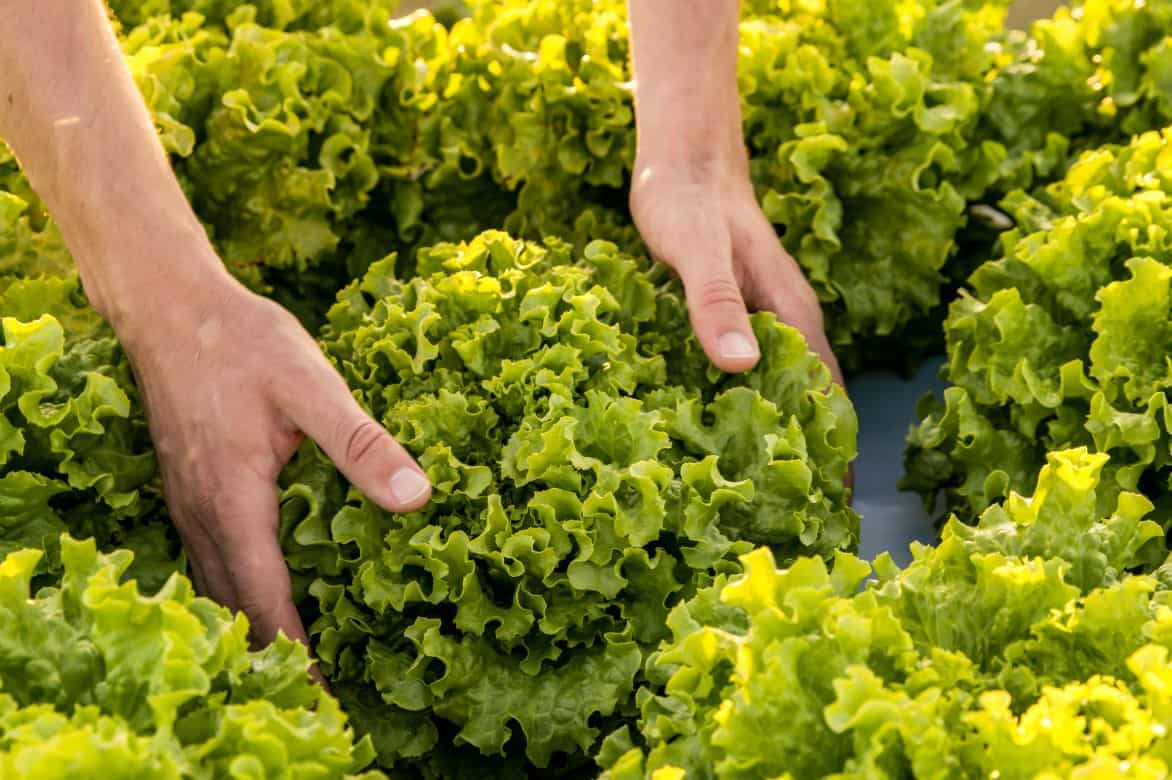
Cut-and-come-again lettuces, on the other hand, are harvested as needed. Simply cut the leaves slightly above the collar with a knife. Again, remember to water to encourage new leaf growth.
Harvesting lettuces is best done in the morning. They should be eaten as soon as possible. They can be stored for 24 hours in the vegetable drawer of the fridge.
Usage and Nutritional Benefits
Lettuce contains over 95% water and few energy components, making it a low-calorie vegetable (approximately 15 kcal/100g). On the other hand, it is rich in fibre, minerals (iron, manganese), vitamins A, K, B9, and C, and trace elements. It also has antioxidant properties.
Lettuce is primarily consumed in salads, with a vinaigrette. To preserve all the benefits of this lettuce, it is important to prepare it at the last minute by tearing the leaves by hand rather than cutting them with a knife. The leaves should be thoroughly drained. Lettuce leaves can also be added to sandwiches or stuffed with fresh cheese for appetisers. When cooked, lettuce can be braised, used in parcels, or incorporated into soups.
To learn more about lettuces
To learn more, read our article: “When and How to Transplant Lettuces and Salad Greens in the Garden?“.
Frequently asked questions
-
Why does my lettuce bolt?
Bolting in lettuces is entirely natural, as, like all vegetable plants, they seek to produce seeds to reproduce (and ensure the survival of the species!). Running to seed generally occurs when the lettuce reaches ripeness... or due to intense heat causing a form of water stress. Thus, the lettuce hurries to produce its seeds. To prevent bolting, it is often enough to water well so that the lettuce suffers less from the heat. You can also choose varieties more resistant to running to seed and ensure you respect their growing season. A spring lettuce is grown in spring... not in summer!
-
Can I grow lettuces on a balcony or terrace?
Lettuces are perfectly suited for growing in pots on a balcony or terrace, especially cut-and-come-again varieties. Choose pots that are deep enough (at least 30 cm) and have drainage holes, filled with good-quality vegetable compost. Place them in partial shade and water them very regularly.
-
Can a harvested lettuce regrow?
If you leave the root in the soil and cut your lettuce at the collar, young shoots will appear quite quickly. You should water after the harvest of the lettuce.
- Subscribe!
- Contents































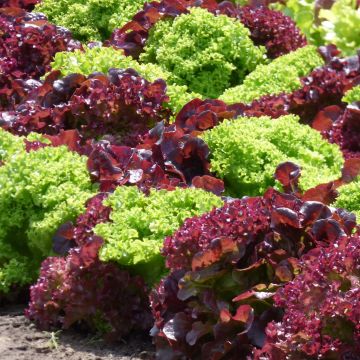

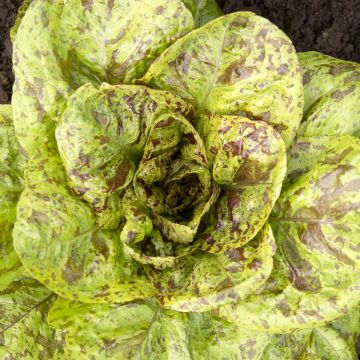


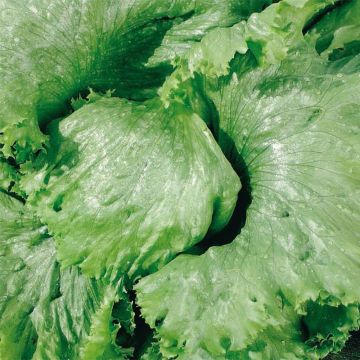
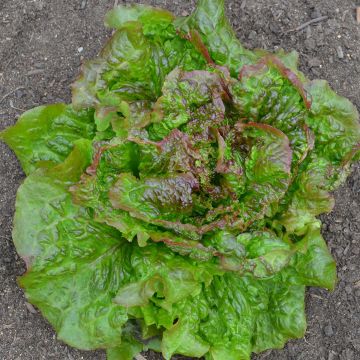

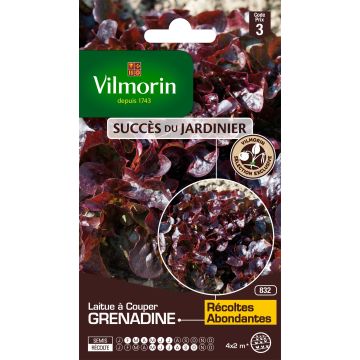
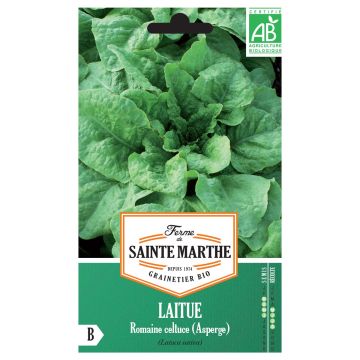
Comments